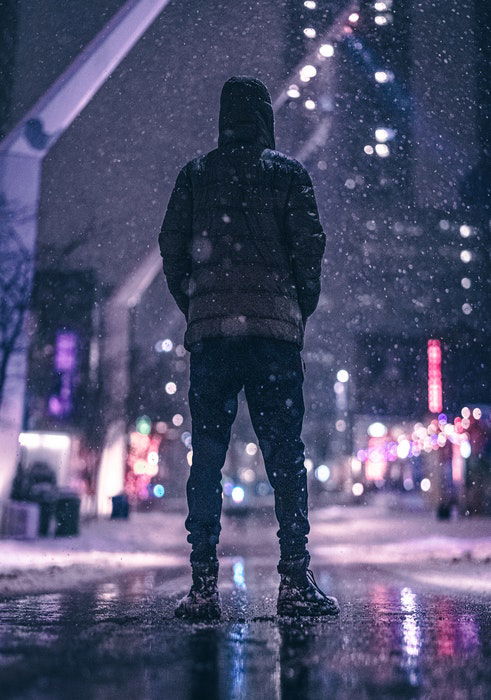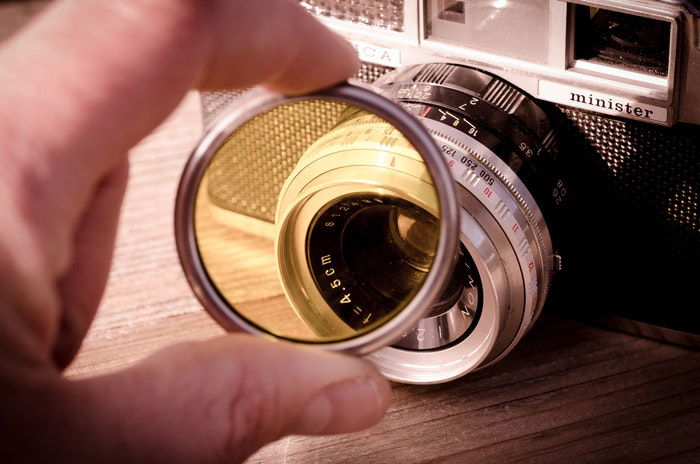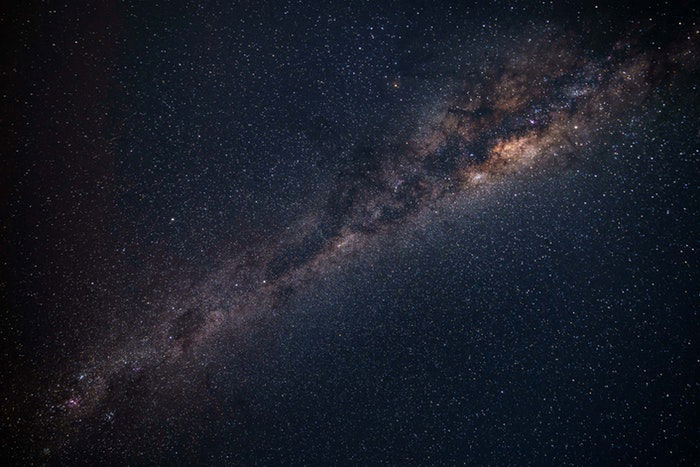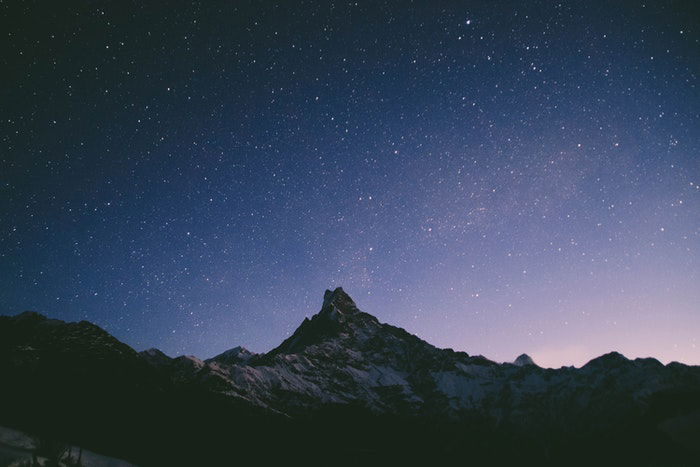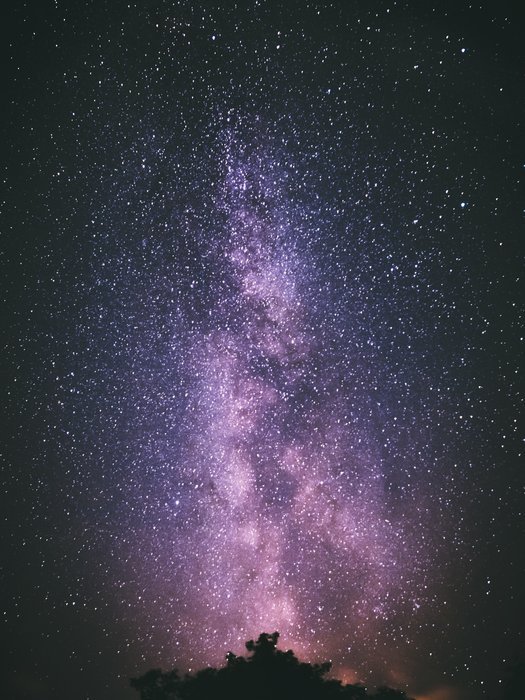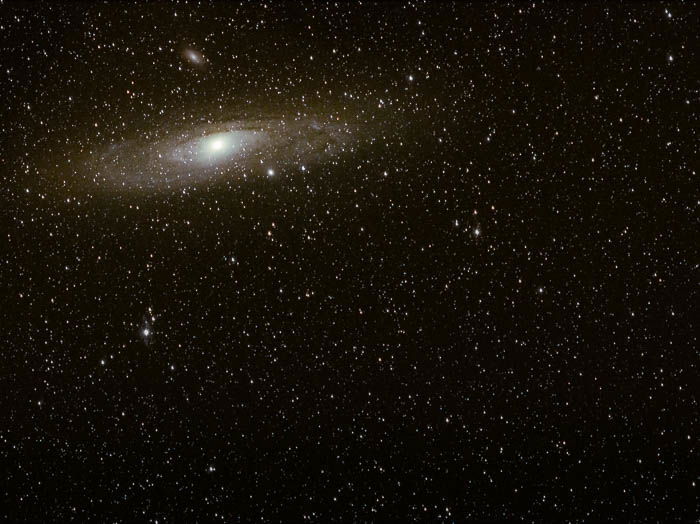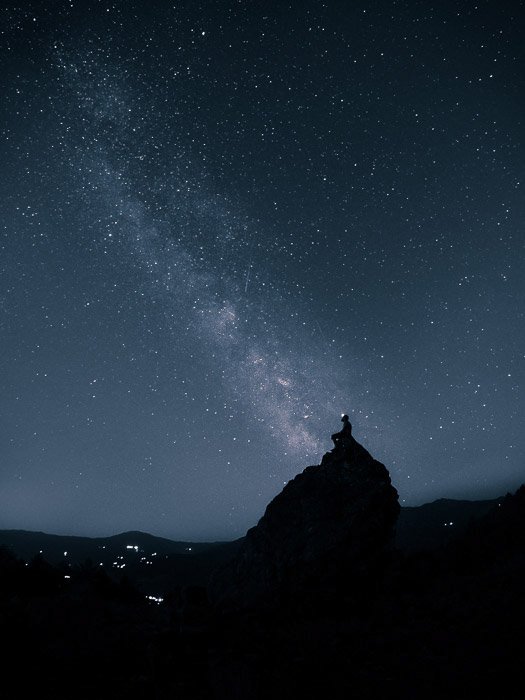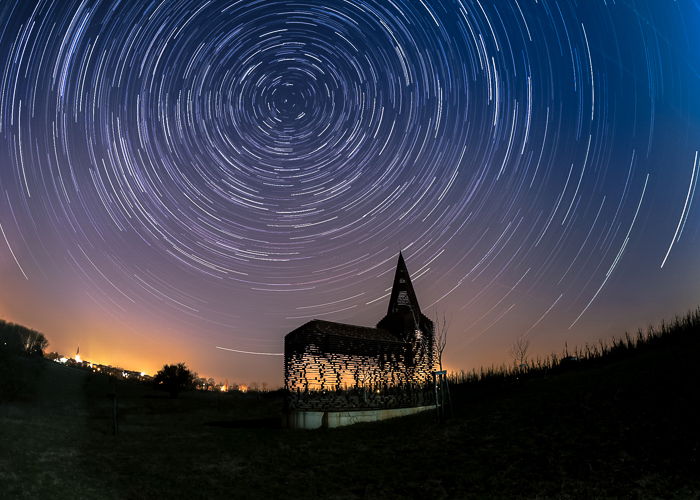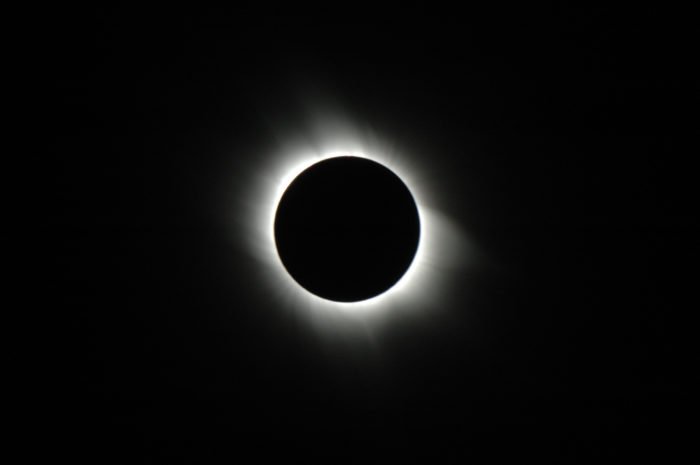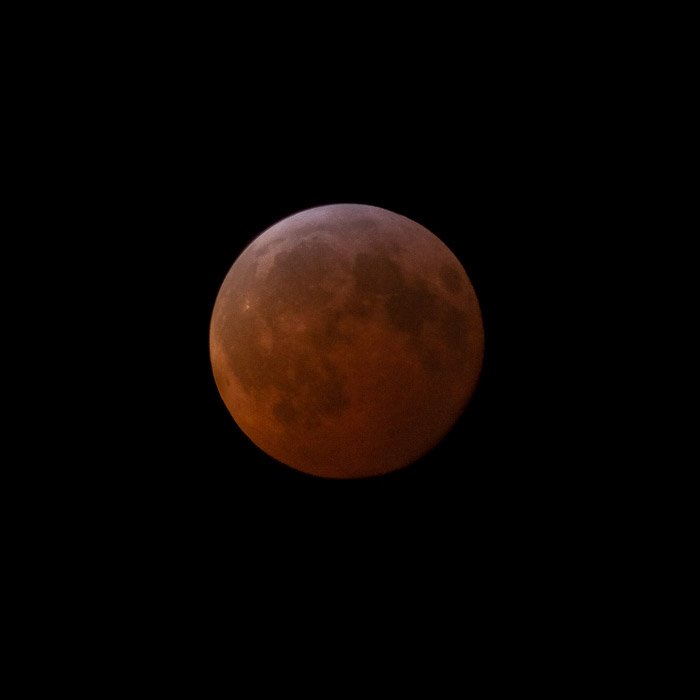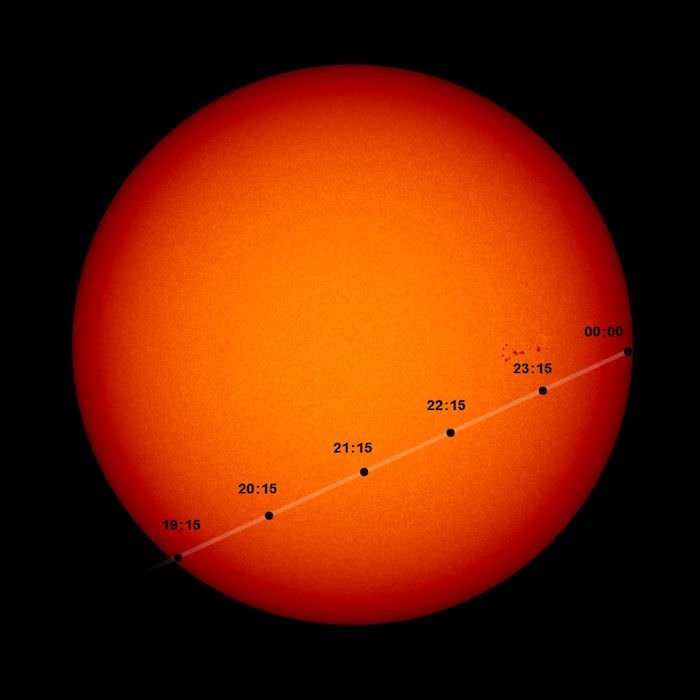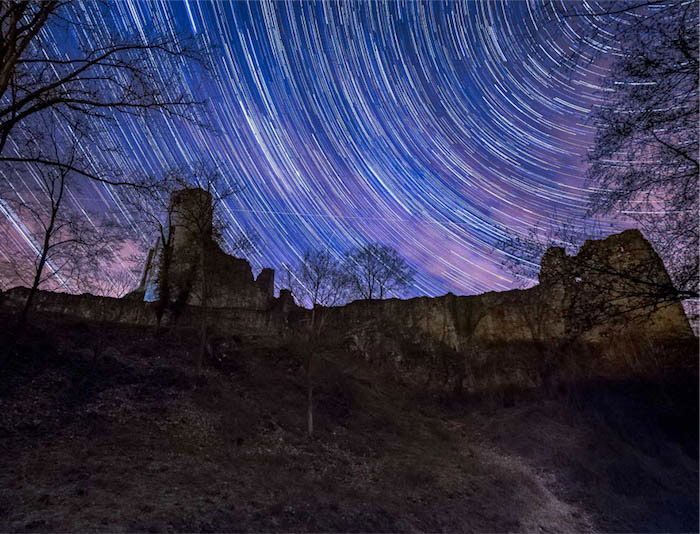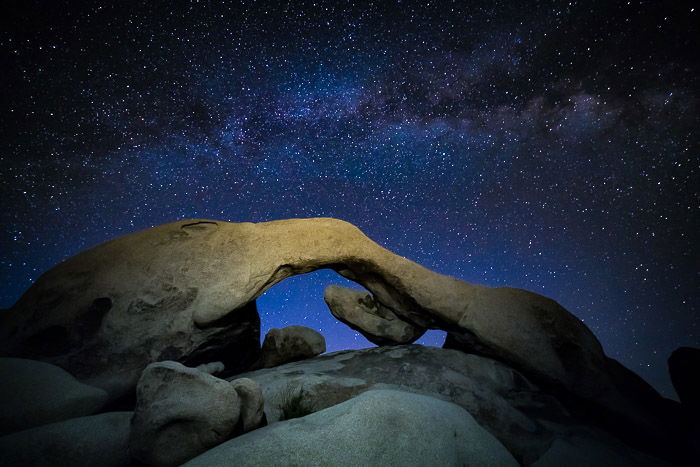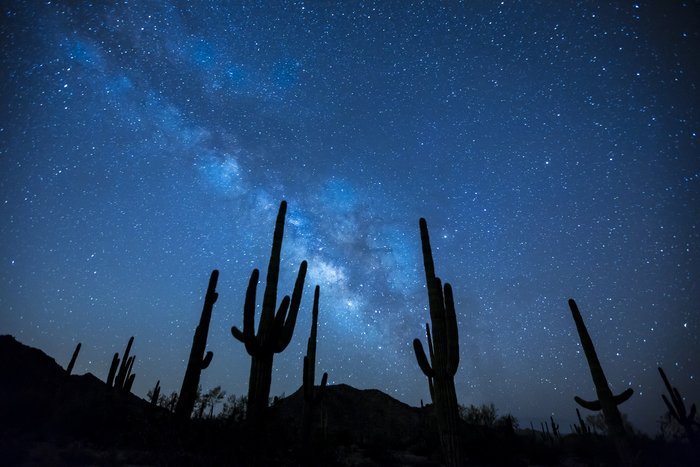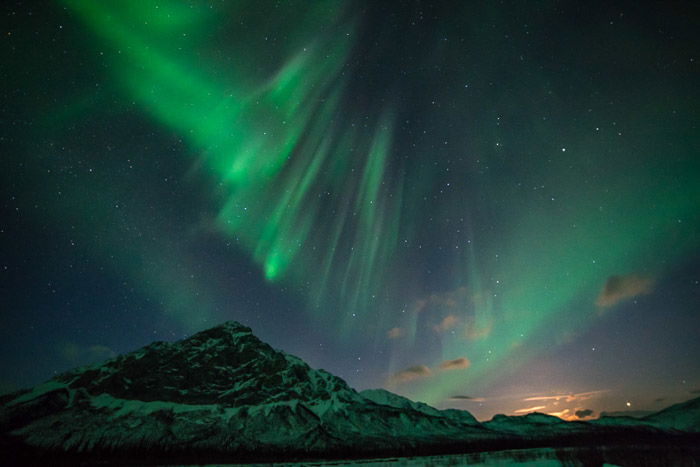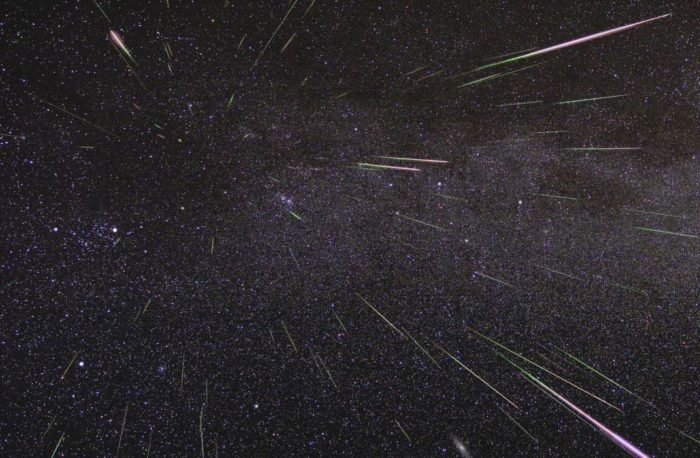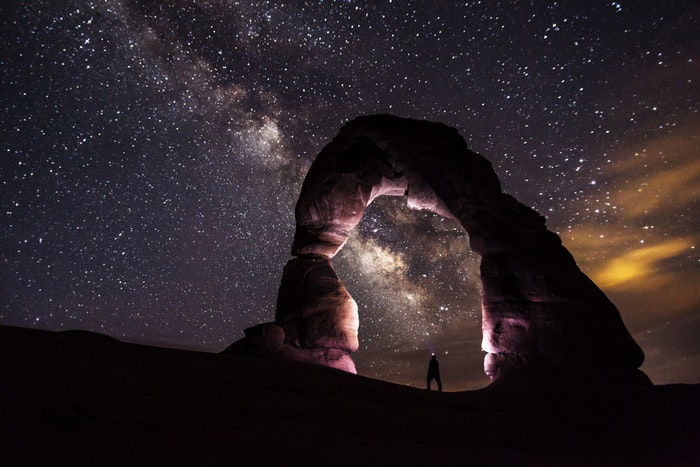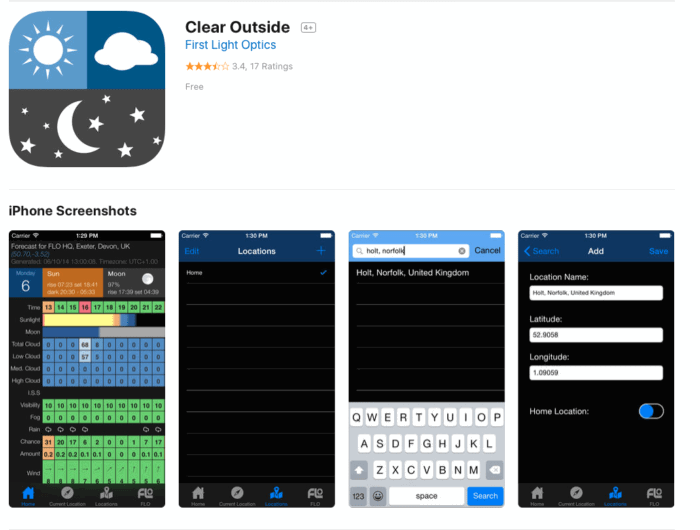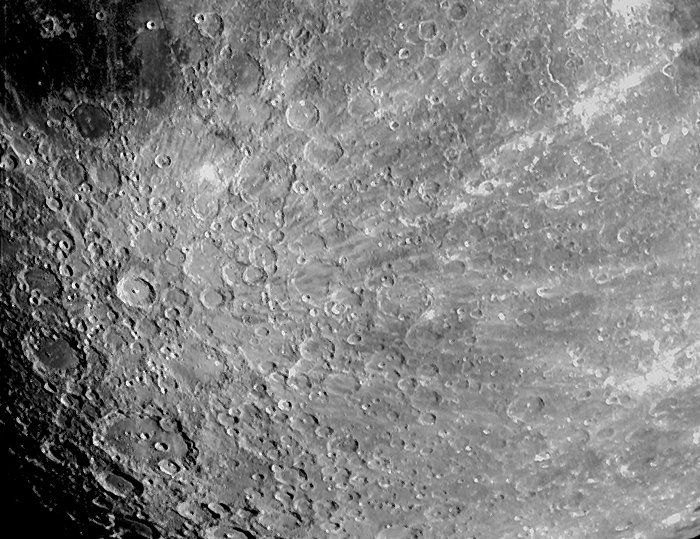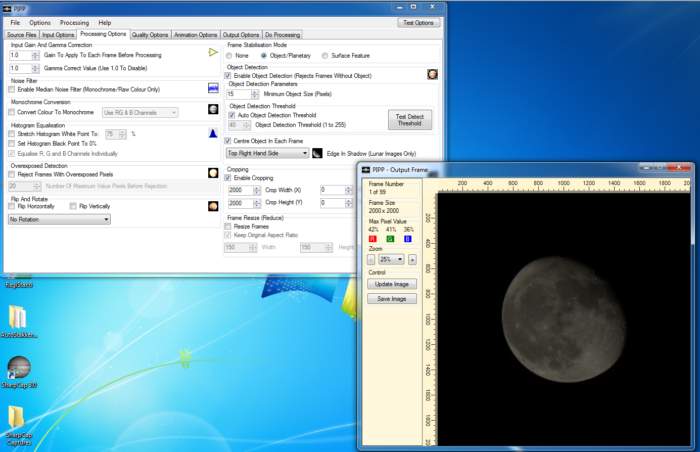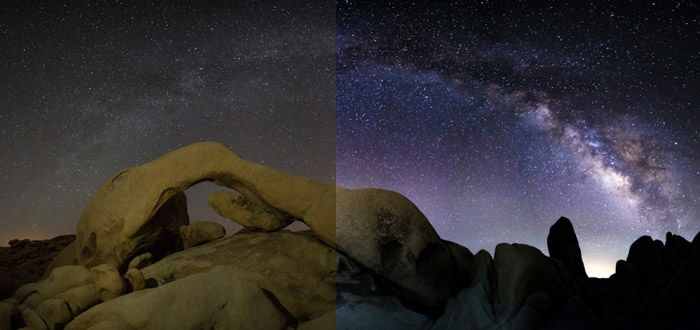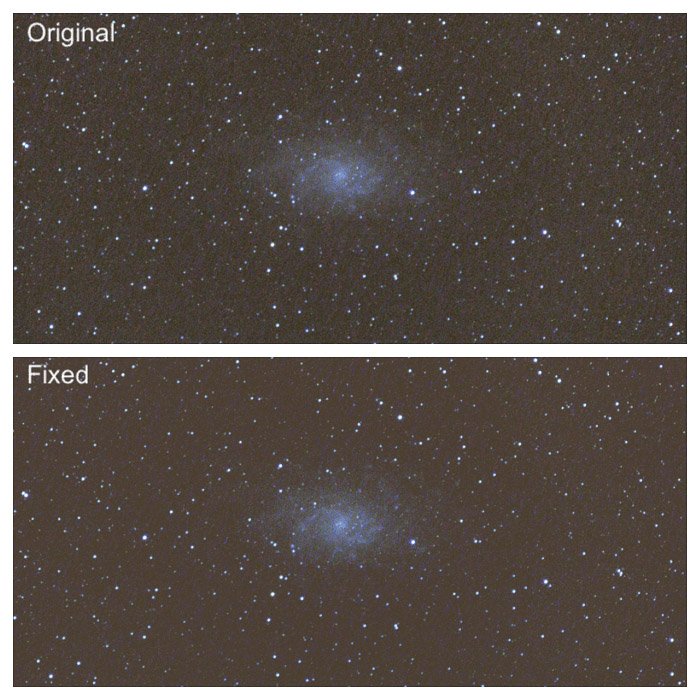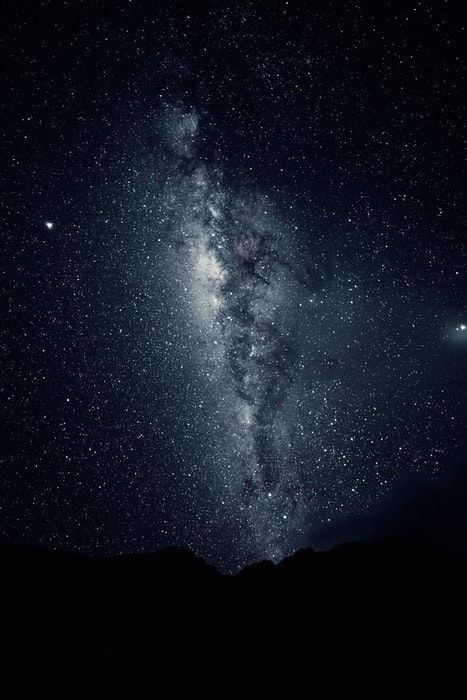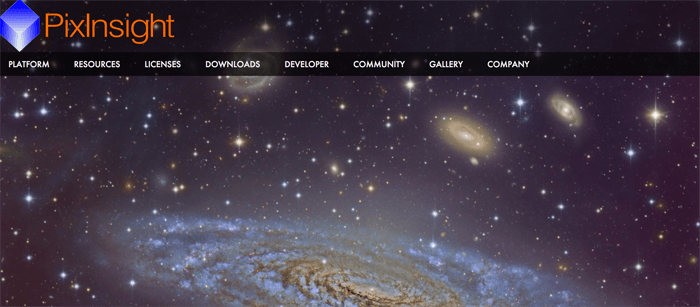Photographing the night sky and all its wonders is as close as many of us will get to being out there. All you will need is a little training.
[ExpertPhotography is supported by readers. Product links on ExpertPhotography are referral links. If you use one of these and buy something, we make a little bit of money. Need more info? See how it all works here.]
What Is Astrophotography?
To put it simple, astrophotography is photographing astronomical objects. These might be the moon, planets, and stars, but also nebulae and The Milky Way. There are several types of astrophotography you can pursue. Our article will go through them all.
Deep Space/Sky
Photographs which get taken with a telescope of objects far away into the night sky. These are the beautiful images of interesting nebulae and distant galaxies. This style would include the most complicated and technical aspects of astrophotography. Here, you need to think about star trails as a challenge to overcome. Also consider telescopes, light pollution, editing software and other pieces of equipment.
Solar System
Everything within our own solar system, such as our moon, our sun and the planets that circle around it. Here you can use a telescope. But you can also use a multitude of telephoto lenses to get stunning results.
Wide Angle Astrophotography
This is a type of astrophotography that uses a wide field of view, such as wide and super-wide lenses. These images include night landscapes with the Milky Way in the background. Capturing star trails is also another great subject. This area is very accessible and the least technical.
Time-Lapse Astrophotography
Time-lapse is an extension of the wide-angled astrophotography. This requires you to take many exposures over a period of time and then combine the images to create a video. This is also a great technique for star trail images.
Camera Equipment
How to Choose the Best Camera for Astrophotography
There are many different camera types for every photography genre. Astrophotography is no different. There are the standard DSLRs, either full frame or cropped. The mirrorless systems and even your smartphone could give you some great shots. There are even specialized Astrophotography cameras designed to capture the skies. Each camera has its benefits, so try using what you have before you think about other systems. This article will give you a great idea of what to look for, to capture those stunning images.
CCD Imaging Vs. DSLR
A CCD (charge-coupled device) is an integrated circuit, etched onto a silicon surface. This forms the light-sensitive element pixels. Light as photons lands on this surface and generate an electrical charge. An analogue-to-digital converter turns each pixel’s value into a digital copy. This creates an image. There are many reasons why you should choose a CCD camera for astrophotography. CCD cameras can be up to 50 times more sensitive to light than DSLRs. You can photograph at a slower shutter speed to better eliminate stair trails. Their dynamic range is much better and they can have built-in guide chips to help you navigate the stars. Read this article to see if your astrophotography can improve with a CCD camera.
Which Camera Sensor Size is Best for Astrophotography?
When it comes to the sensor, is it better to photograph the sky with a crop or full frame? There is no simple way to answer this, as both have benefits and downsides. A crop sensor magnifies the full frame lens you are using. A Canon 7D (crop sensor) with a 300mm telephoto lens (full frame), the magnification of the focal length is 1.6 times. The 300mm lens converts to 480mm with this DSLR. The benefit here is that you are now closer to the object you would like to photograph. But, this could be a problem when paired with a telescope. You might even be too close to photograph the subject in one shot. With a full frame sensor, the quality is higher and the digital noise will be lower. Yet, these cameras are very expensive compared to their siblings, the crop sensors. This article goes into great depth on what you should think about these two systems. Read through it before you run out and buy a 5D Mark IV.
Milky Way Photography Gear: A Comprehensive Guide
Besides a camera and lenses, you need some special gear for Milky Way Photography. A compass comes handy to find the North Star and the best parts of the Milky Way. A headlamp will help you move around in complete darkness. An intervalometer will allow you to fire several shots without having to touch your camera. And a remote will help you reduce camera shake. You also need to find the perfect tripod setup for Milky Way photography. Learn here for more.
How to Choose the Best Telescope for Astrophotography
Choosing to use a telescope over a telephoto lens might have benefits. It comes down to what you want to use it for. A telescope is an extra piece of equipment, which is an extra expense if you don’t already own one. For this to be worth it, you will have to use it quite a few times. Try to borrow one first to see if it fits your astrophotography needs. If you are looking to capture deep space subjects, a telescope is a perfect tool. You will need an adapter to be able to connect your camera. This also means you can photograph the moon with your smartphone. Yet, if you own a crop sensor DSLR and 300mm lens, the 1.6x magnification will give you 480mm focal length. This is the same as most telescopes, and they even work on an f/6 aperture. This article will help you understand its limitations and decide if it is right for you.
Best Telescope Mounts for Astrophotography
For beautiful shots of the sky, you’ll need a telescope and a place to mount it. Different mounts offer different possibilities in your astrophotography. Alt/Az mounts move horizontally. Equatorial mounts track the sky by moving the payload around two axes. Read here on which one you’ll need and why.
Star Adventure Tracking Mount
This is a portable solution for photographing the night sky. The keyword here is portable, meaning you can escape that light pollution and get into the wild. A Skytracker is a device that follows the rotation of the earth. This enables your focus to stay set on the star systems without any trailing or blurriness. They sit sandwiched between your tripod and camera and can be set up in a matter of minutes. Perfect for astrophotography where technical challenges could become extensive. This article gives you the complete guide to the SkyWatcher Star Adventurer SkyTracker. From initial setup to the final review.
Best Clothing Choices
Depending on the season, gloves and warm clothing could be essential. If you are planning to hike long distances to get these shots, then your feet will thank you for good hiking boots. Even a sleeping bag might come in handy. Keeping you warm for those hours where your DSLR is doing all the hard work. The gloves are an important choice. Get gloves that can work with your smartphone and are thin enough so they allow you to tinker with gear. Your astrophotography will improve. Read this article on the best clothing and accessories for Milky Way Photography.
Best Filters For Astrophotography
Filters can help you get great photographs of the sky. City Light Suppression (CLS) helps to cut skylight pollution from cities. Light Pollution Suppression (LPS) filters cut down the extra light in the sky. LPRO Max filter is for wide-angle landscape astrophotography. It produces more natural-looking star colors. This list is not exhaustive – there are a lot more than these three. Unlike most other filters, they fit in-between your camera sensor and your lens. So you will need to take the lens off to fit them. They are a necessary part of capturing stunning images of the skies above.
Astrophotography Camera Settings
The camera can be set to many different combinations. These allow you to photograph a multitude of subjects. With astrophotography settings, you want the camera to do as little as possible. Manual mode will give you the most amount of control and will stop your camera trying to work out what to do on its own.
Choosing the Best In-Camera Settings
Manual mode is a must, and that goes with your focusing too. You need to do it all yourself. The last thing you want, during a long exposure, is for your camera to decide the scene isn’t sharp enough. For astrophotographers, shooting in raw is a must. Raw captures the most amount of information for post-processing. Another benefit that is often overlooked is ‘mirror-lockup’. This is a setting on most DSLRs that stops mirror shake. The mirror flicks up and down at the start and end of each photograph. This can create problems in your astrophotography. Read our detailed article to learn the best camera settings for Milky Way photography.
Best Night Photography Settings
Night photography is different than daylight photography. The settings you use for both will differ. At the darkest times, you will need to rely on faster shutter speeds and wider apertures. The biggest issue is trying to keep a low ISO. With Astrophotography, you need to find a balance between the settings. Images over long time periods add blur and narrow apertures make longer exposures. Read here for all the information you need on night photography settings.
How to Use the 500 Rule to Capture Better Night Sky Photography
This is a simple rule to minimalize unwanted star trails in your astrophotography. The basic idea is: 500 divided by the focal length of your lens = The longest exposure (in Seconds) before stars start to “Trail”. For example, if our focal length was 24mm then our longest exposure would be (500/24) 20.8 seconds. If the focal length was 480 mm, our crop sensor using a 300mm telephoto lens would give us (500/480) 1 second. This is a general guide, but it will save you time in trial-and-error. Read more about the 500 rule here.
How to Shoot Powerful Astro Photographs
Photographing the sky sounds easy. You take your DSLR with a wide-angle lens out somewhere in the wilderness and plonk it on top of a tripod. With everything set to manual, you point your camera/tripod combo at the sky and fire off a few photographs. You use the settings you worked out with the 500 rule. And yet, this is deceiving. Astrophotography is not that simple. You need many more things to turn that photograph into a breathtaking image. You need a good location, the right gear and an idea of what your subject is going to be. You need to research what is possible and look at many photographs for inspiration. Even after photographing the scene, you need to edit the images too. Post-processing is another art, which will take time, effort and patience. But don’t get discouraged! Keep reading our article, stick with astrophotography and the benefits will come tenfold.
Useful Glossary of Astrophotography Terms
Here is a very helpful list of all the items and terms you might need for Astrophotography. Learn them or print them out to take the glossary with you.
The Ultimate Guide to Night Landscape Photography
This article discusses the challenges of astrophotography and night landscape photography. Astrophotography is easier, as you concentrate only on the sky. Post-processing and tracking devices allow you to stay clear of unwanted light trails. With nighttime photography of the landscape, you focus on both subjects; the sky and the land. Due to this, you can only work with fast shutter speed. Otherwise, the light trails in the sky are visible. Read our ultimate guide to night landscape photography here.
How to Photograph Stars: A Practical Guide
Photographing the stars above might be the purpose of your astrophotography. If so, then this guide is for you. There are a few different approaches you can take. The important question is, do you want to show creative blur or not? By using long shutter speeds, you can capture the movement of the stars in the night sky. This simple technique makes for very interesting images. Learn more about photographing the stars.
How to Photograph a Solar Eclipse
A solar eclipse is something many people regard as a very special occasion. Around once every 18 months a total solar eclipse is visible from Earth. That’s two totalities for every three years. Regardless, capturing one well is somewhat challenging. Not only do you need to photograph from the right location, you only have a very small window to do so. All the information you need is in our solar eclipse article here.
How to Photograph a Lunar Eclipse
A Lunar eclipse happens when Earth positions itself between the sun and the moon. Most years have four eclipses, where two of these are always lunar eclipses. In 2019, a Super Blood Wolf Moon appeared in the night sky on January 21. This rare event is a great time to show off your astrophotography skills. The next lunar eclipse is coming soon. Get learning now so you are prepared when it comes.
How to Photograph the Sun
Life on earth is only possible due to the sun. This beautiful beast makes our solar system what it is. Most photography is only made possible because of the sun. If only we could capture our star in its full glory. Not sure an easy task. It is also dangerous to look at it with the naked eye. Photographing the sun is it is a daytime occurrence. Capturing the sun at night is impossible. It differs from the typical astrophotography we know and love. So you need different equipment and techniques. For all the tips and techniques you need, read our article here.
How to Photograph the Moon
This article points out that photographing the moon is one of the least demanding areas of Astrophotography. It is a great place to start, as you will see the moon almost every evening. Unless your location stops its visibility or clouds make it impossible. In the northern hemisphere, The Milky Way is only visible in the sky between April and September. The moon is a good starting point. Try to capture this celestial being in all her glory in a night landscape or cityscape. She is a great addition to an image that needs some definition in the sky. Capturing the moon along with ambient light will help create stunning landscapes. Check out this article to learn how to photograph the moon and create fantastic sky images.
How to Photograph Star Trails
Photographing star trails is only one possible way to capture the night sky. These can add a breathtaking element to a landscape image, due to the definition in the sky. They look other-worldly due to the fact that we never see the stars in this way. Some of the articles here are to help to cut-out the star trails as they can be distracting. Yet, doing them well makes for a stunning image. This article goes through all the steps to be able to create these images. You will need a little help with the use of smartphone applications and tips.
How to Find The Milky Way
You’re already standing in the Milky Way right now. But for photographic purposes, the Milky Way is everywhere in the night sky. For us to photograph it, we need a clear night and low light pollution. The other thing to take into consideration is that the Milky Way moves. In fact, we are the ones moving due to the Earth’s rotation. But it makes our galaxy appear to pass above us. The time of year and our location is also very important. The Milky Way is only visible to us in the Northern Hemisphere from April to September. After that, it dips down to greet those in the south. It can also change its orientation. It starts horizontally, moving to a more vertical position. This article gives you the best information on how to find the Milky Way. It helps you organize and research.
How to Photograph The Milky Way
The Milky Way is a very impressive detail in our night sky. Photographs of our galaxy, in all her glory, are breathtaking. She has the ability to make us feel small yet significant. Photographing her is not as difficult as you might think. You could also be joining the many people focusing on her in our night sky. Photographing the Milky Way is about 20% technique, 30% gear, and 50% preparation. Preparation needs to cover all your equipment; for your camera and for yourself. Read this detailed article to learn how to capture the Milky Way.
How to Photograph the Northern Lights
The Aurora Borealis is a must to capture. It is one of the best astrophotography subjects. These magical lights appear between late September to late March. But, you need to be in the right areas to see them. Alaska, Iceland, Northern Scandinavia, and Yukon are sites with the best chances. Location scouting will give you a perfect opportunity for some of the best images of your life. Learn more here on how to capture these stunning sky phenomena.
How to Photograph a Meteor Shower
Meteor showers are a great way to liven up your nighttime skies. They are very inspiring and add interest to an otherwise bland image. The good thing (for photography) is that meteors are always falling to earth. There are nine days where the sky is busier than usual. Read our article here to find out when these days are, and how to capture the showers.
Creative Night Photography Tips
The hours of darkness can be such an interesting time to photograph. Everything changes. The landscape, the colors and the light all differ from the daytime. Even the same locations differ a lot. These settings can be a little challenging. Especially if you are not used to it. Your gear may change to equipment that can handle low light conditions. A tripod could be useful or extra lighting and the techniques that come with it. A wide-angle lens or smaller aperture can also help. In terms of what to shoot, you are only limited to your creativity. Have a look at our article for inspiration. It also gives you many creative possibilities to get you outside practising.
Smartphone Astrophotography
8 Must-Have Astrophotography Apps For iOS
Astrophotography is not without its challenges. This is where smartphone apps can provide some much-needed help. For one, they can help you navigate the dark sky. Some subjects are not noticeable with the naked, untrained eye. Other apps give you a set of dates in a calendar format. These help you plan what is possible to see and where from. Read our article here for the must-have astrophotography apps for iPhone.
Composition
Composing Astrophotographs
Different photography areas need different composition techniques. Some stay with us the whole time. Others change and many can be broken. The rule-of-thirds is a good composition rule to use if in doubt, no matter the subject. Leading lines is a good go-to rule too, as it helps draw the viewer’s eye into the frame. Weighted images and use of negative space can be helpful. They show your audience what you find interesting and what they should pay attention to. Learn more here about the must-knows astrophotography composition tips.
Post-Processing
Post-Processing Astrophotography: All You Need To Know
Astrophotography is 50% capturing the scene and 50% post-processing the images. There are many ways you can edit your astrophotography. They will depend on what kind of photography you are undertaking. You will use image stacking for scenes with a large amount of ‘noise’ or grain. Our article here gives you all the tips, all of the ways you can edit your images. It provides you with a perfect workflow to make sure your astrophotography images burst.
Editing Milky Way Photographs Using Adobe Lightroom
Post-processing an image is almost like photographing the scene again. You need to look at how to get the best from the image, looking at light, contrast, and color. Using editing software like Adobe Lightroom for Milky Way photography is no different. You might find that these photographs will need a little more tinkering than other styles of photography. Here, filters and presets can be your best friends. The dehaze tool within Lightroom works well as our sky is full of haze. Use this to make those stars pop. Graduated filters can help correct color hues without affecting the whole image. This article gives you a great guide on what can be down to get the best out of your astrophotography.
5 Useful Photoshop Tips For Astrophotography Editing
Amazing astrophotography images don’t fall out of the sky. They need to be processed to remove light pollution and distracting elements. We have collected the five most useful tips for astrophotography image editing. For example, using the eyedropper tool can help to fix the background. You’ll find out here, and more.
Astrophotography Editing Software
Deep Sky Stacker Tutorial for Astrophotography Shots
Stacking images is a great trick to use in photography. It can help with layering images to allow a subject to be 100% in focus. Here, it helps to cut down on the noise when photographing the night sky over long exposures. When you spend a long time outside photographing these beautiful scenes, you want the best out of the processing stage. Otherwise, you can end up with a very noisy and hazy photograph. I’m pretty sure that is not your aim. Deep Sky Stacker is free software, that can work in raw or other image types. It can work with photograph styles such as panoramas and wide-angle shots of the Milky Way. A great tool to use to get the meaty part of the work done. The finer post-processing can be finished off in Photoshop. This article really goes in-depth into how you could benefit from this software.
StarStax Review: Star Trails Made Easy
StarStax is a software, designed to make your star trail photography easier. We have the capability to capture many images rather than one, long exposure shot. This provides us with much higher quality images. These images need to be stacked together, but this is something we can’t do in Adobe Lightroom. This is where StarStax gets to shine. Read our review on what makes this program great for your astrophotography.
PixInsight
PixInsight is an all-in-one piece of software. It replaces all other pre- and post-processing software. It costs less than owning Adobe Photoshop outright and does more for Astrophotography than any Adobe package. If you can get past the basic interface and the $200 price tag, this is the go-to piece of software. It stacks, contrast corrects, removes vignetting, color balances, crops, deconvolutes and reduces noise. These aren’t all of its features either. Try it out, and since there is a 45-day money-back guarantee, you lose nothing. It could be the best purchase to push your astrophotography to the next level. Read more about the software here.
Conclusion
Photographing the sky above is both magical and mysterious. You can go to the same spot and take a photo of the sky above, and it will never look the same. Astrophotography is a field that challenges you and requires you to leave your comfort zone. And with our detailed guide, you will be able to do so.
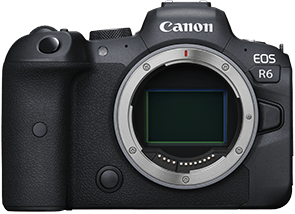

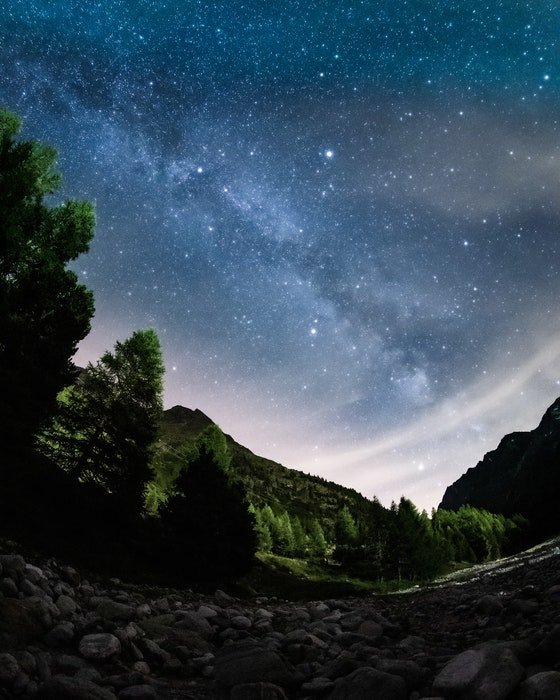
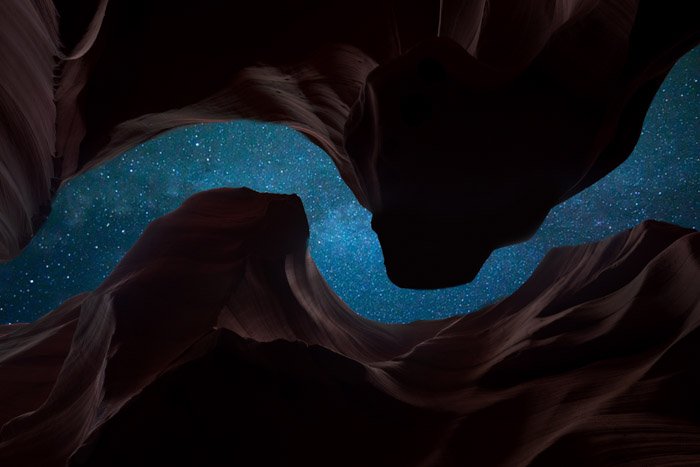
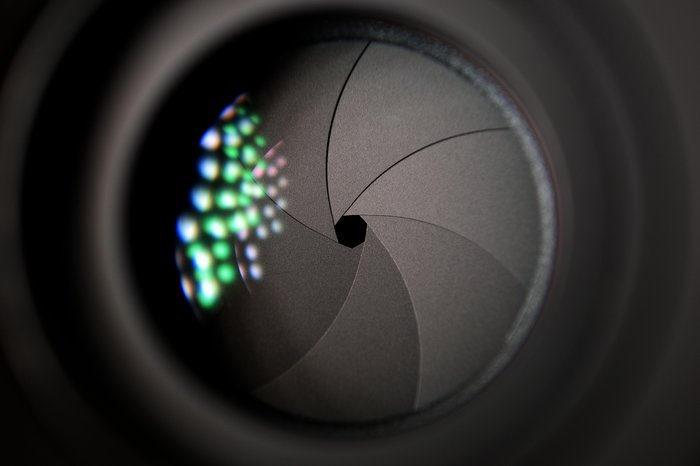
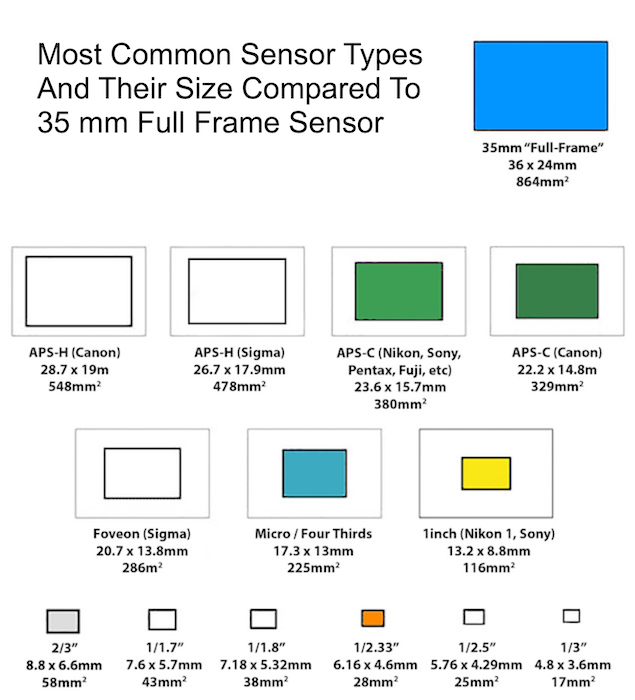
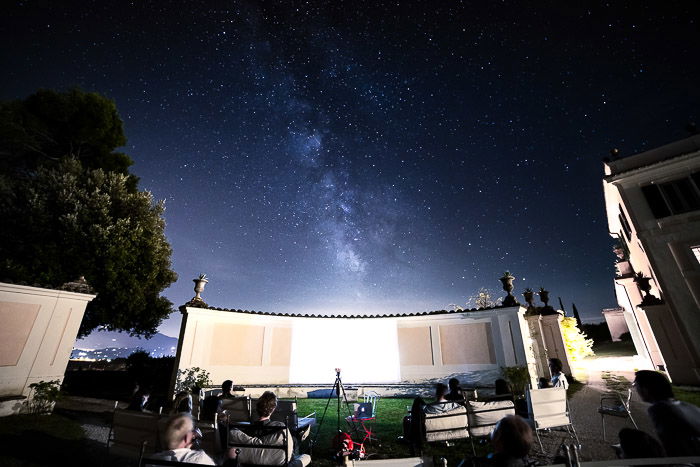
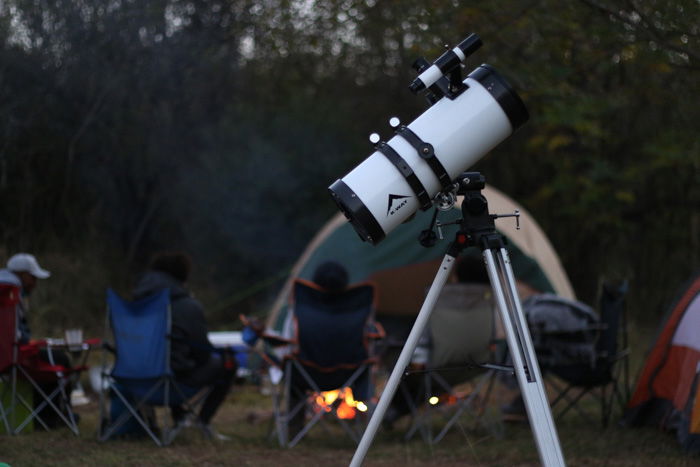
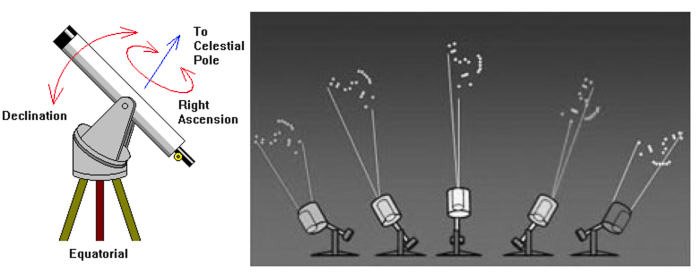
![]()
